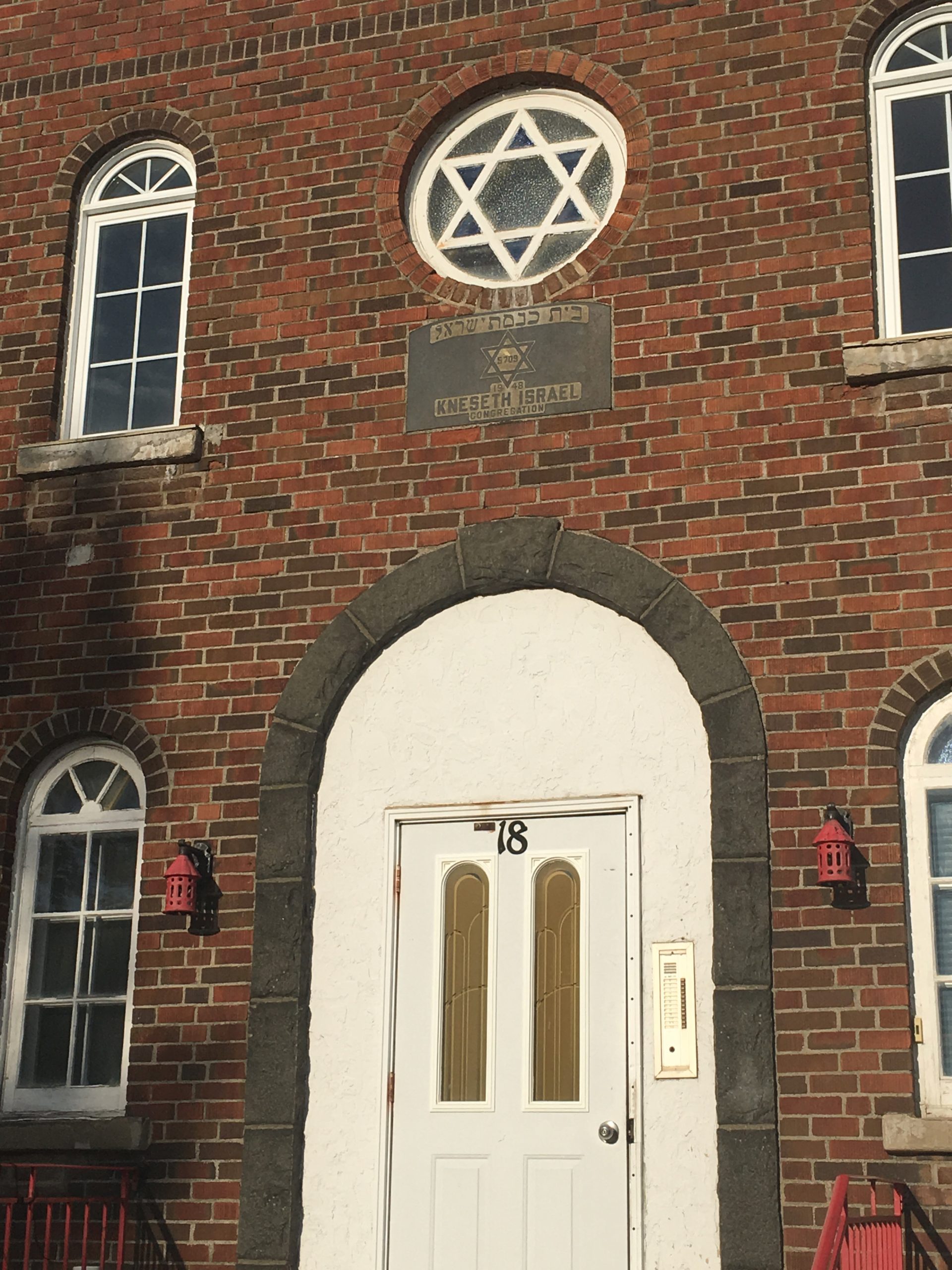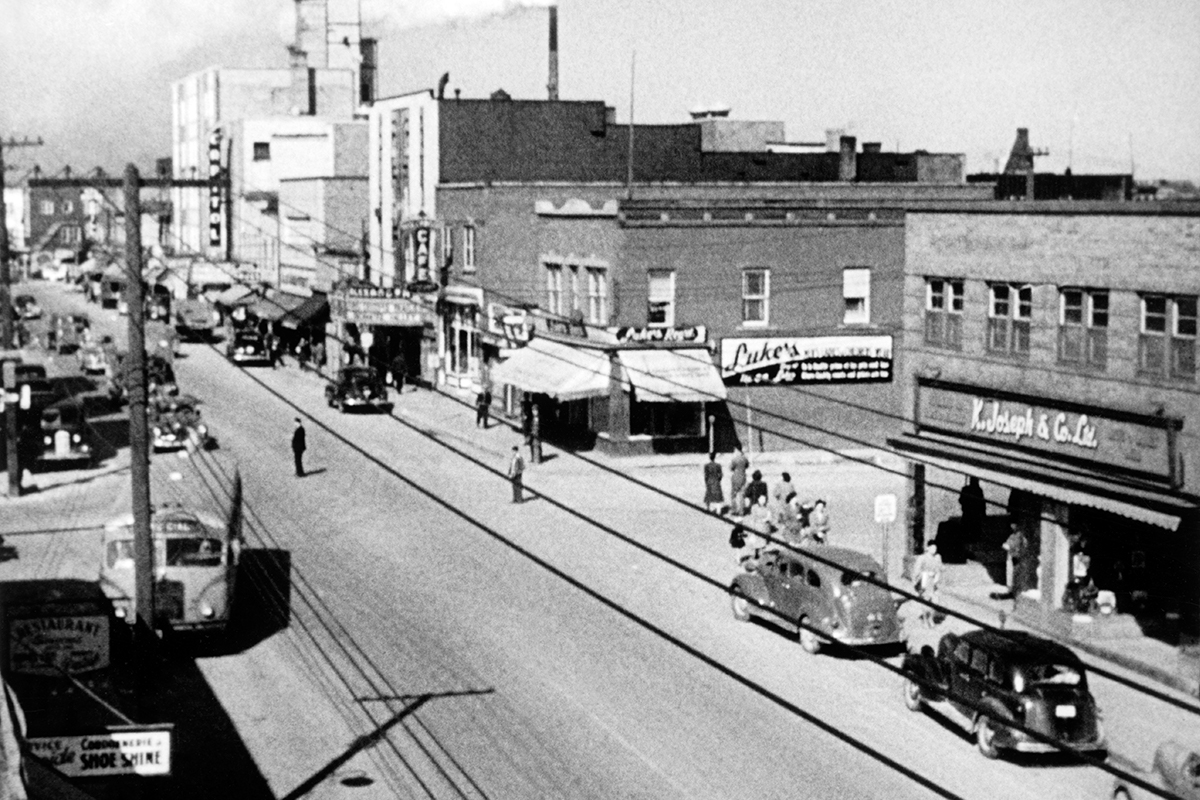Most people associate Jewish communities in North America with big cities, so it’s no surprise when someone asks where my father is from and my response elicits a confused or bewildered reaction. No, he’s not originally from Montreal (the city I grew up in), I tell them — my father was actually born and raised in Rouyn-Noranda, a small French mining town in the Abitibi-Témiscamingue region of Québec, Canada.
My parents and I made the eight-hour drive to my dad’s hometown in the summer of 2017, heading 600 km northwest of our house in the suburbs of Montreal into the heart of mining country. My father had been talking about showing my mother and me where he grew up for as long as I could remember, but I was far more eager to visit Los Angeles — where he spent most of his 20s — than a tiny, unknown town that required a day-long car trip. Little did I know that what I would see, learn, and experience during that trip would change and define my identity as a Jewish person.
While it’s true that the majority of Jewish communities across the continent reside in big cities, there was once a time when Jews purposely relocated to small mining towns in search of business opportunities in the schmatta (garment) industry, as well as in other sectors and professions.
My great-grandparents were no exception. They founded Miller’s Store, a department store located on the town’s main street that was beloved by the community for decades to come, and my grandparents, Norma and Harry Miller, moved from Montreal to Rouyn-Noranda in the mid-1940s to help out. Their Jewish community — consisting of roughly 35 families at its peak — lived largely harmoniously with the town’s other residents for many years.
My father, Joseph Miller, was born the youngest of three children in 1950. He lived in Rouyn-Noranda for the first 16 years of his life before departing for university — just as most other Jewish kids from the town did as soon as they were old enough to leave.
When he returned with his wife and daughter in tow roughly 50 years later, much of what he remembered of the town had changed. It was clear almost immediately upon arrival that it had become primarily francophone and homogenous in the years since he had left for the big city — with just 10 Jews living in the town of 42,334 residents as of 2016.
This was technically unsurprising since most anglophone communities, including Jews, departed Québec’s small towns for other parts of Canada in the 1970s due to language politics and the rise of the province’s separatist movement. But it didn’t make it any easier to accept that the community in which my father had come of age — the community from which I came, too — had completely vanished.
Walking down the main drag, we received confused looks as we conversed unapologetically in English. It was clearly not something the locals were accustomed to hearing. But while there were hardly any Jews left living in the place my dad had once called home, we did find the facade of the synagogue — where he once attended Hebrew school four times a week and had his bar mitzvah decades ago — untouched.
The three of us stood in shock and awe as we stared at the plaque that read “Kneseth Israel Congregation.” The interior of the building had been converted into apartments, but the Hebrew writing and Magen David remained on the exterior brick wall as proof that the community existed.

This shul was once far more than an old building where the religious prayed, I soon learned — it was the central gathering place of the Jewish community. Similarly to how places of worship serve as community hubs for small, immigrant communities in towns and cities across North America, this synagogue was where happy occasions were celebrated and tragedies were mourned.
“Being there in shul, seeing the Torah carried around, it gave me a sense of identity, of who I was,” my father, who considers himself a secular Jew, told me of what the synagogue meant to him as a child.
In the basement, a large multi-purpose room frequently doubled as a place for my dad and his cousin to goof off before Hebrew school. The two boys played endless hockey games in that room using just a rubber foot from a chair and broomsticks, according to my father. And a stage in that same space saw countless theater productions rehearsed and performed, some of which were directed by my grandmother. Her love of theater, something I fortunately inherited, forever keeps me close to her despite her death in 2010.
Before visiting Rouyn-Noranda at age 20, the small town in northwestern Québec with a thriving Jewish community was simply a hypothetical setting in which my dad’s childhood anecdotes took place. I felt hardly any personal connection to this town that was so far from my own upbringing, and so different from what I knew of today’s modern Jewish communities. It was sometimes difficult to believe it even existed in the first place.
But standing there, smack in the middle of this town, I could picture my dad’s stories of community, laughter, and love taking place right before my eyes.
“It was very affirming for me to come back to say we were here, we existed, we lived,” he told me as we recently reminisced about our trip.
Driving by the four quaint homes in which my father was raised and many family members came to stay, I could feel the tight-knit Jewish community that found a way to thrive in a town in which they were both a religious and a linguistic minority. And I could feel that a huge part of my Jewish identity today was rooted in that place, whether I was aware of it or not.
This is a common story for many Jews. As a people that has been consistently displaced throughout history, it can be difficult to truly understand where we come from — especially when our ancestors’ communities seem so far off from our own realities.
Whether it be the shtetls of Eastern Europe that vanished in WWII, the Jews that were forced to flee violence in Ethiopia in the 1990s, or any other Jewish community that dwindled into nothing over the years, many Jews will never have the luxury of visiting the places where their parents, grandparents, and great-grandparents made homes for themselves, or see the actual structures where their stories unfolded. And yet we carry the remnants of these communities with us, often unknowingly, in our day-to-day lives.
I was fortunate enough to actually see the physical place where my dad, now 70, was raised, and I will be forever grateful for how it opened my eyes to the importance of these now-vanished communities, and to our duty to keep the memories of them alive.
This town, which could arguably be considered one of the least Jewish places in present-day Canada, helped me feel closer to my Jewish roots than I ever thought possible. Because while it is no longer inhabited by Jews, the architectural evidence of the community’s existence and my father’s accompanying memories helped show me where I come from — and there is nothing more Jewish than learning about, and honoring, the people and places that came before.



